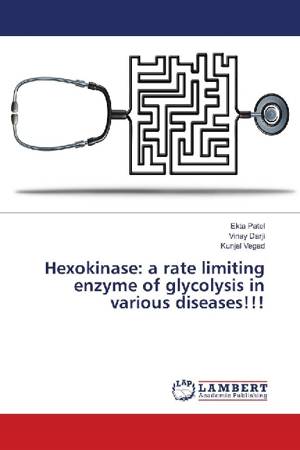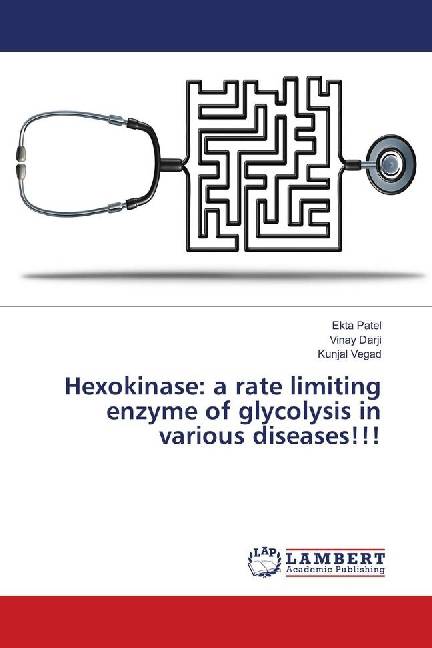
- Afhalen na 1 uur in een winkel met voorraad
- Gratis thuislevering in België vanaf € 30
- Ruim aanbod met 7 miljoen producten
- Afhalen na 1 uur in een winkel met voorraad
- Gratis thuislevering in België vanaf € 30
- Ruim aanbod met 7 miljoen producten
Zoeken
Hexokinase: a rate limiting enzyme of glycolysis in various diseases!!!
Ekta Patel, Vinay Darji, Kunjal Vegad
Paperback | Engels
€ 39,45
+ 78 punten
Omschrijving
In humans and mammals, glucose is essential both as an energy source to help sustain cell life and as a carbon source for most cell building blocks. Glucose is unique in that it can be used as an energy source by all cells in both the presence and absence of molecular oxygen (O2) i.e., aerobic and anaerobic. Glycolysis is one of the important metabolic pathways that convert glucose into pyruvate. A hexokinase is an enzyme that phosphorylates a six carbon sugar, a hexose, to a hexose phosphate. In most tissues and organisms, glucose is important substrate of hexokinases. Hexokinase binds glucose through an induced fit mechanism that excludes H2O from the enzyme active site and brings the phosphoryl group of ATP into close proximity with the C-6 carbon of glucose. Hexokinase is feedback inhibited by glucose-6-P which binds to a regulatory site in the amino terminus of the enzyme. Hexokinases are I, II, III, and IV (glucokinase) or hexokinases A, B, C, and D. Type IV hexokinase is a liver/pancreatic beta cell enzyme that is specific for glucose and whose level is controlled by insulin, not G6P.
Specificaties
Betrokkenen
- Auteur(s):
- Uitgeverij:
Inhoud
- Aantal bladzijden:
- 52
- Taal:
- Engels
Eigenschappen
- Productcode (EAN):
- 9783659705564
- Uitvoering:
- Paperback
- Afmetingen:
- 150 mm x 220 mm

Alleen bij Standaard Boekhandel
+ 78 punten op je klantenkaart van Standaard Boekhandel
Beoordelingen
We publiceren alleen reviews die voldoen aan de voorwaarden voor reviews. Bekijk onze voorwaarden voor reviews.








